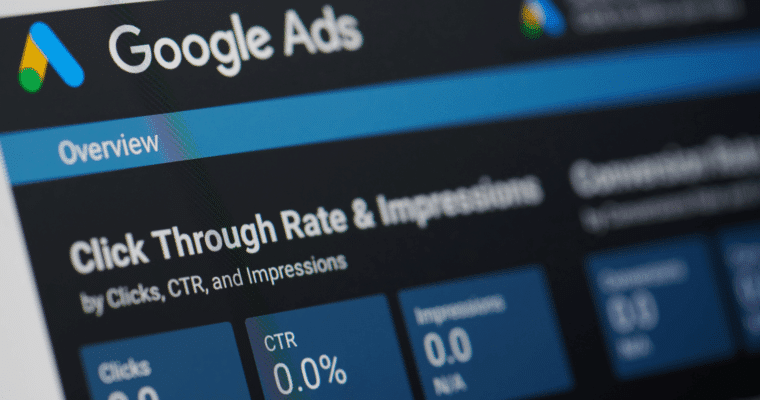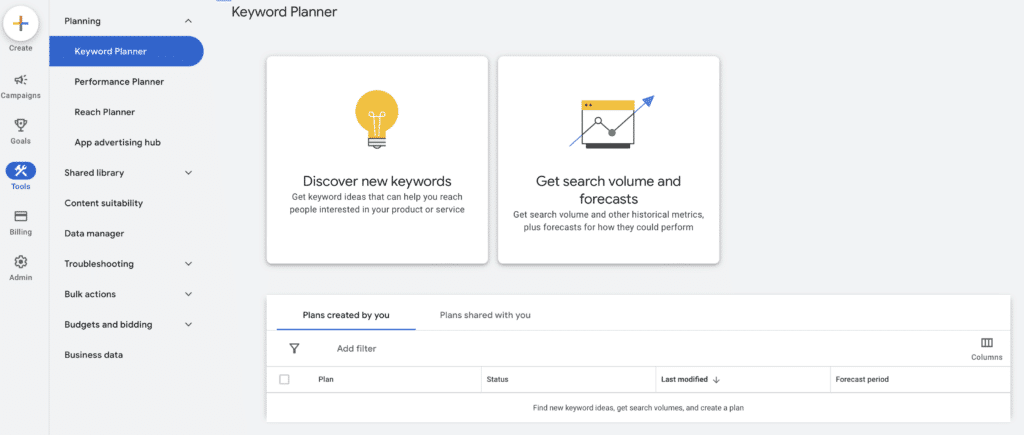Mastering PPC Management: An Effective Way to Boost Your ROI from Google Ads
 Reading Time: 6 minutes
Reading Time: 6 minutes
Are you looking to maximise the return on investment (ROI) of your Google Ads campaigns? PPC management plays a crucial role in ensuring that your ads are reaching the right audience and generating conversions. In this article, we will explore how you can optimise your Google Ads for maximum ROI by mastering the art of PPC management.
Table of Contents
Understanding the Basics of Google Ads and PPC Management
Before delving into the intricacies of optimising Google Ads for heightened ROI, it’s essential to grasp the foundational elements of Google Ads alongside the principles of PPC management. Google Ads, a potent paid advertising platform by Google, enables advertisers to display their advertisements across Google’s extensive search network and beyond, reaching potential customers precisely when they’re seeking related products or services.
At its core, PPC Management encompasses a broad spectrum of tasks including but not limited to keyword selection, bid management, ad copywriting, and performance analysis. Effective PPC management ensures that your Google Ads campaigns are not only visible to the right audience but also aligned with your marketing budget, thereby maximising cost-efficiency and return on investment.
An integral aspect of PPC management is the constant analysis and adjustment of campaigns based on real-time data. This dynamic approach allows for the identification of high-performing keywords and ad placements, ensuring that your advertising spend yields the best possible results. Understanding these basics provides a solid foundation upon which to build more complex strategies and techniques aimed at boosting your Google Ads campaigns’ performance and ROI.
Selecting the Right Keywords for Maximum Impact
In the realm of optimising Google Ads for heightened ROI, the art of selecting the most appropriate keywords is paramount. This process begins with in-depth keyword research, aimed at uncovering the phrases and terms most frequently used by your target demographic. Identifying these keywords is a delicate balance of pinpointing those with significant search volumes yet minimal competition, ensuring your ads stand out and capture the attention of prospective customers.
Utilising tools such as Google’s Keyword Planner can be instrumental in this phase, offering insights into search trends and competition levels for various keywords. This is not just about understanding what your audience is searching for, but also anticipating their needs and the language they use to express those needs. Incorporating long-tail keywords can be particularly effective, as these more specific phrases often signal a higher intent to purchase or engage, despite their lower search volumes.

The above image is a screenshot of how Google’s Keyword Planner appears in its Google Ads console. For How use Google Keyword Planner – this Backlinko article offers a detailed explanation.
Incorporating these carefully chosen keywords into your campaigns allows for a more targeted approach, directly addressing the queries of your potential customers. This strategy not only improves the visibility of your ads but also enhances the relevance, significantly contributing to an increased click-through rate and, ultimately, maximising the impact of your advertising efforts on ROI.
Crafting Compelling Ad Copy That Converts
Crafting an ad copy that stands out in the bustling digital marketplace is essential for catching the eye of your potential customers. It begins with integrating your meticulously selected keywords into the narrative of your ad, ensuring that it speaks directly to the user’s search intent. However, the true art lies in balancing keyword incorporation with persuasive and engaging content that compels the reader to take action.
Your ad copy should encapsulate the value proposition of your offer in a concise manner, highlighting what sets your product or service apart from the competition. Emphasise benefits rather than just features, painting a picture of how your offering improves the user’s situation or solves a problem they face.
Incorporating a sense of urgency or exclusivity can further enhance the effectiveness of your ad copy. Phrases like “limited time offer” or “exclusive access” encourage users to act swiftly to take advantage of your proposition.
A compelling call to action (CTA – such as the one shown above) is the crown jewel of your ad copy. It should be clear, commanding, and reflective of the outcome you desire. Whether it’s “Shop Now”, “Learn More”, or “Get a Free Quote”, your CTA needs to be front and centre, guiding potential customers towards the next step in their journey with your brand.
Finally, testing various versions of your ad copy is critical to understanding what resonates best with your audience. A/B testing allows you to refine your message and ensure that your ad copy not only attracts attention but also drives results.
Leveraging Ad Extensions to Enhance Visibility
Ad extensions serve as a pivotal tool in amplifying the visibility of your Google Ads, offering potential customers additional, relevant information at a glance. These extensions, ranging from sitelinks that direct users to specific pages of your website, to callouts that highlight unique selling points or offers, enrich your ad’s real estate on search engine results pages (SERPs).
Utilising structured snippets, you can showcase specific aspects of your products or services, such as categories or models, providing a more detailed snapshot of what you offer. Enhanced visibility through ad extensions not only aids in drawing the user’s attention but also significantly contributes to improved click-through rates by offering multiple pathways to engage with your ad. Implementing these extensions wisely can lead to a more informative and compelling advertisement, ensuring that your message stands out amidst the competition.
It’s important to select extensions that align with your campaign objectives and resonate with your target audience to maximise their effectiveness. By doing so, you not only enhance the visibility of your campaigns but also steer more qualified traffic to your website, setting the stage for increased conversions and ROI.
The Importance of Landing Page Optimisation
Optimising your landing pages is critical in the conversion journey, serving as the bridge between user interest and action. A well-crafted landing page should resonate with the messaging of your Google Ads, presenting a cohesive narrative that reaffirms the user’s decision to click through. It is essential that the content, from headlines to visuals, aligns closely with the expectations set by your ad, ensuring consistency across your campaign.
The effectiveness of a landing page hinges on its user experience. It must load quickly, display well across devices, and navigate intuitively, guiding the user towards the desired action without unnecessary distractions. Key elements such as compelling headlines, benefit-driven content, and a standout call to action should be prominently featured, facilitating the decision-making process for the visitor.

Pro Tip: Ensure that your landing page loads as quickly as possible and keep your content and tone of voice consistent, in both your ads and on your website.
Moreover, personalisation can significantly enhance the relevance of your landing page. Tailoring content to match the specific interests or demographics of your audience can dramatically increase engagement and conversion rates. Incorporating testimonials or trust signals further bolsters credibility, encouraging users to proceed with confidence.
In essence, the strategic optimisation of landing pages not only captivates attention but also propels the user towards conversion, amplifying the overall success of your Google Ads campaign.
Monitoring and Adjusting Campaigns for Continuous Improvement
Effective PPC management is an evolving process that involves regular oversight and timely adjustments to your ad campaigns. Delving into analytics is critical for uncovering actionable insights that can significantly impact your campaign’s performance. By scrutinising metrics such as conversion rates and cost per click, you are equipped to fine-tune your bids, tailor your ad copy, and even re-evaluate your target demographics to better meet your marketing objectives.
Additionally, experimenting with A/B testing of different elements within your ads and landing pages offers invaluable perspectives on what truly resonates with your audience. Such adjustments are instrumental in not just sustaining but enhancing campaign efficacy over time, ensuring that your advertising spend is continuously optimised for maximum ROI.
Leveraging tools provided by Google Ads, such as the Performance Planner and Auction Insights, can further augment your strategic decisions, providing a comprehensive view of how your campaigns stack against competition and where opportunities for refinement lie.
Engaging in this constant cycle of analysis and adaptation is pivotal in driving the success of your PPC initiatives, fostering growth, and maintaining a competitive edge in the digital advertising landscape.
Conclusion
Embarking on the journey to optimise your Google Ads for maximum ROI is a multifaceted endeavour that demands diligence, strategic insight, and continuous adaptation. By understanding the core principles of Google Ads and PPC management, selecting the right keywords, crafting compelling ad copy, leveraging ad extensions for enhanced visibility, optimising landing pages, and diligently monitoring and adjusting your campaigns, you set the stage for significant improvements in your advertising performance.
Remember, the landscape of digital marketing is perpetually evolving, and so should your strategies. Keeping abreast of trends, utilising analytical tools for informed decision-making, and remaining flexible in your approach are key to staying ahead in the competitive realm of PPC advertising. Maximising ROI is not a one-off achievement but an ongoing process of refinement and evolution. As you apply these insights and techniques, your proficiency in managing Google Ads will not only grow but also translate into tangible business success.

